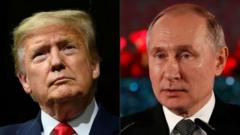Are Super Skinny Models Making a Comeback in the UK?

The Return of Thin Models: A Concern for the Fashion Industry
In recent years, the fashion industry has seen a significant shift towards body positivity and inclusivity. However, the recent banning of advertisements featuring models deemed "unhealthily thin" has reignited discussions about the potential return of the super skinny trend. This article delves into the implications of these changes and the ongoing struggle between body image standards and fashion marketing.
The High Street Fashion Fallout
High street brands such as Zara, Next, and Marks & Spencer have faced scrutiny from the Advertising Standards Authority (ASA), resulting in several adverts being banned for showcasing models who appeared excessively thin. This has raised alarms among industry experts who worry that the fashion world is on the verge of a regression to the "heroin chic" aesthetic that characterized the 1990s and early 2000s.
According to the ASA, there has been a noticeable increase in complaints regarding such advertisements. In 2025, the watchdog received five or six complaints weekly, while post July's M&S ad ban, this number surged to over 20 complaints in just two weeks. These statistics, while seemingly minor, highlight a growing concern within society about the portrayal of body image in fashion advertising.
Understanding the "Heroin Chic" Phenomenon
The term "heroin chic" refers to a trend where models exhibit a gaunt appearance, often characterized by hollow faces and sharp bone structures. This aesthetic was prevalent in the early 1990s, but its resurgence could have dire consequences for societal perceptions of beauty and health. Charli Howard, a model and activist, has warned that we are on the brink of seeing this harmful trend return, especially in light of the recent advertising controversies.
Howard's concerns echo those of many who recognize the detrimental impact that unrealistic beauty standards can have on women's self-esteem and body image. She highlights that while some women may naturally be thin, deliberately showcasing models who appear unwell sends a harmful message to the audience.
Regulatory Responses and Advertising Standards
The ASA has established guidelines to prevent advertisers from promoting unhealthy body images as aspirational. However, some recent rulings have found that certain models displayed in high street advertisements did not meet the criteria for being classified as unhealthy. This raises questions about the effectiveness of these regulations in a rapidly evolving fashion landscape.
For instance, M&S defended its choice of model by stating that the pose was intended to convey confidence rather than slimness, while Next highlighted that their model had a "healthy and toned physique." Zara also pointed out that its models possessed medical certifications verifying their health. This indicates a growing complexity in the conversation around body image in fashion, as the lines between healthy and unhealthy representations blur.
The Role of Social Media in Body Image Perception
With platforms like TikTok becoming increasingly influential, the concept of "thinspiration" has gained traction. This trend encourages the idolization of extreme thinness and has led to movements like "skinnytok," which the platform has since blocked in an attempt to mitigate its harmful effects. The intersection of social media and fashion advertising raises further complications regarding the societal understanding of beauty standards.
Industry Insights: Perspectives from Models and Experts
Various models and fashion industry experts have voiced their opinions on the current state of body representation. Charlotte Holmes, a model and yoga teacher, reflects on her 20-year career, noting that while the body positivity movement raised awareness, it did not significantly alter the underlying standards of the modeling industry. She believes that the ideal of being "ultra-thin" has always lingered beneath the surface.
Holmes asserts that terms like "heroin chic" and trends such as "skinnytok" demonstrate a troubling regression in societal standards of beauty. Similarly, fashion journalist Victoria Moss connects the resurgence of thinness to the increasing popularity of weight loss medications, suggesting that our cultural obsession with thinness is being reinforced by external influences.
Fashion Trends and Body Diversity
The re-emergence of 1990s fashion trends, including ultra-low rise jeans and strappy tops, has created a demand for models who fit these silhouettes. Personal stylist Keren Beaumont points out that these trends often favor thinner models, perpetuating an unhealthy standard. She hopes the recent controversies will serve as a reminder for brands to embrace diversity in their advertising campaigns.
Simone Konu-Rae, a stylist and senior lecturer at Central Saint Martins, emphasizes the importance of showcasing a range of body types in fashion. She argues that while high street brands may use runway models to elevate their collections, this practice can alienate many consumers who do not see themselves represented in advertising.
Addressing the Issue: The Path Forward
The growing concern about body image in fashion advertising highlights an urgent need for brands to take responsibility. Matt Wilson from the ASA stresses that society grapples with issues surrounding eating disorders, and it is vital for advertisers to consider the potential harm their campaigns can cause.
Moving forward, the fashion industry must commit to inclusivity and body positivity. This involves not only diversifying model representation but also promoting healthy body images that resonate with a broader audience. By understanding the psychological impact of their advertising choices, brands can help pave the way for more realistic and relatable portrayals of beauty in fashion.
Frequently Asked Questions
What is "heroin chic"?
"Heroin chic" is a term used to describe a fashion aesthetic prevalent in the 1990s that features very thin models with a gaunt appearance, often characterized by dark circles under their eyes and sharp facial features.
Why are high street fashion adverts being banned?
High street fashion adverts are being banned because they feature models who appear "unhealthily thin," prompting concerns about the promotion of unrealistic body image standards.
How has social media influenced body image standards?
Social media platforms have amplified trends like "thinspiration" and "skinnytok," which idolize extreme thinness and contribute to harmful beauty standards that affect individuals' self-esteem and body image.
What can the fashion industry do to promote body positivity?
The fashion industry can promote body positivity by diversifying model representation, showcasing a range of body types, and ensuring that advertising campaigns reflect healthy and relatable images of beauty.
As we navigate through these complex discussions around body image and fashion, it begs the question: how can we ensure that the fashion industry moves towards inclusive representation while rejecting harmful beauty standards? #BodyPositivity #FashionTrends #HealthyRepresentation
```Published: 2025-08-08 23:56:26 | Category: technology



